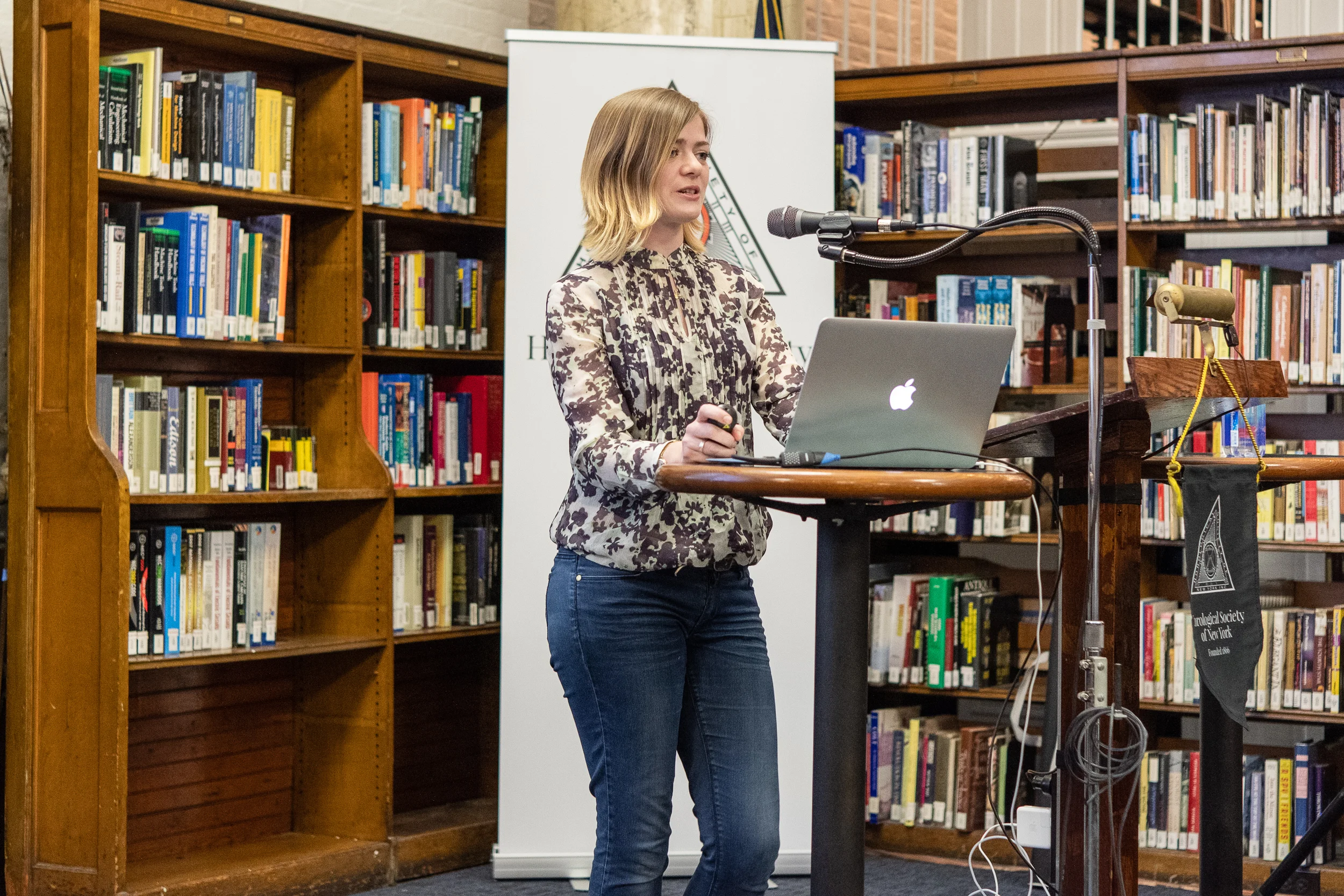Anna Rolls, Curator of the Clockmakers Museum, London
Monday, May 6, 2019
Video recordings of lectures are available to members immediately (using your membership password), and the general public with a 2 month delay.
On the May 6, 2019 lecture series of the Horological Society of New York, attendees found out that the ball drop on New Year’s Eve did not actually originate in Times Square, New York, as a festive way to bring the New Year. The true purpose of a ball drop has to do with the Time Ball located in Greenwich, England. Guest lecturer Anna Rolls, Curator of the Clockmakers’ Museum in London gave HSNY attendees the history, mechanics and the evolution of the Greenwich Time Ball.
Installed in 1833, it was the first public time signal that was designed to drop at 1:00 pm every day from atop the Greenwich Observatory. The purpose of the Time Ball was created for a practical maritime reason by Robert Morcambe: Sailors need to know the time in order to set their marine chronometers before leaving on a voyage.
The entire Time Ball mechanism which is housed in the Museum building spans three floors via a series of winches, chains and latches with a human assistant on the lower level to trigger release the latches via a regulator. However, upgrades to new technology such as the use of the telegraph system in the train and postal industries made the human assistant redundant since the new master clock could now depend on the telegraph signal itself.
Rolls explained how the weather affected the Time Ball throughout its service: Rusting of clips, the ball itself rotting and after the next upgrade of technology to electricity, there were electrical issues such as the short life span of the components especially when they got struck by lightning, strong winds and the fluctuations of temperature and moisture. Incidentally, strong winds made it the primary factor on whether the Time Ball should proceed with its scheduled 1:00 pm drop.
The upkeep of the Time Ball eventually went to the Museum since the Department of Environment’s caretaking standards were woefully lacking and the need for additional equipment on the structure was entangled to the fact that the Museum is a Grade 1 listed building. Because of that citation, there were repeated delays to install an anemometer system on top of the roof.
To conclude the lecture, Rolls gave an account of what she encountered when the Time Ball had a failure in 2016. Assisted by the Cambria Clock Company, it was found that the ball was out of alignment and paint was removed from the mast. However, after a few successful trials, the Time Ball would fail again. The eventual cause was the magnetic brake of the winch. The motor and the brake needed to be stripped and overhauled. Such is the origins and inspiration for one of New York City’s most iconic landmarks!
HSNY thanks Anna Rolls for her fascinating lecture!
























Photography by Atom Moore
Submitted by Melody Benloss, HSNY Librarian & Recording Secretary